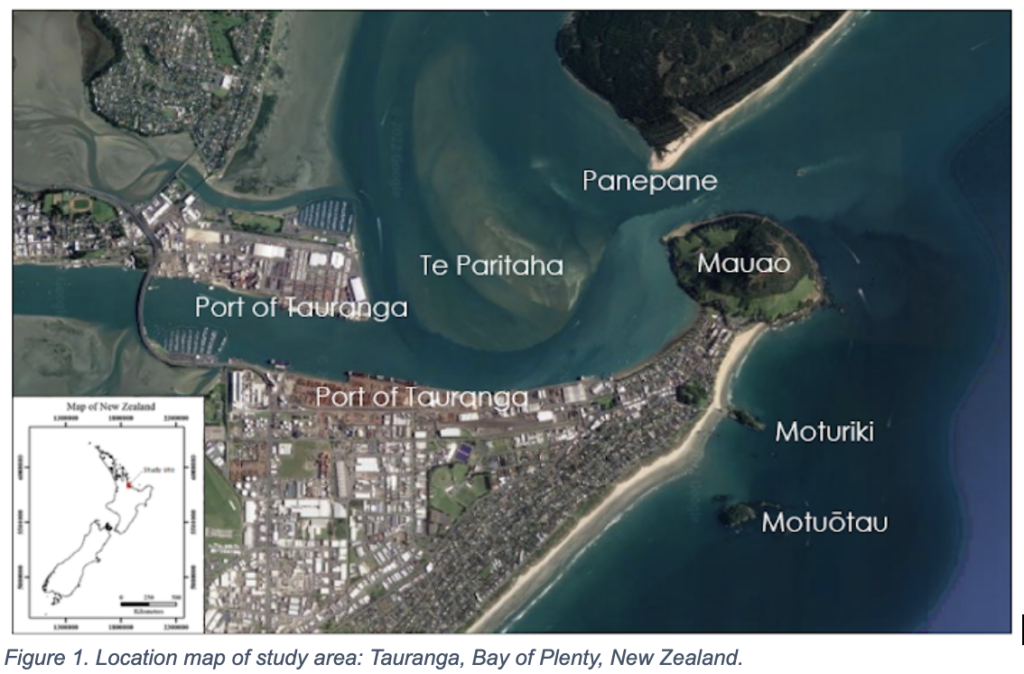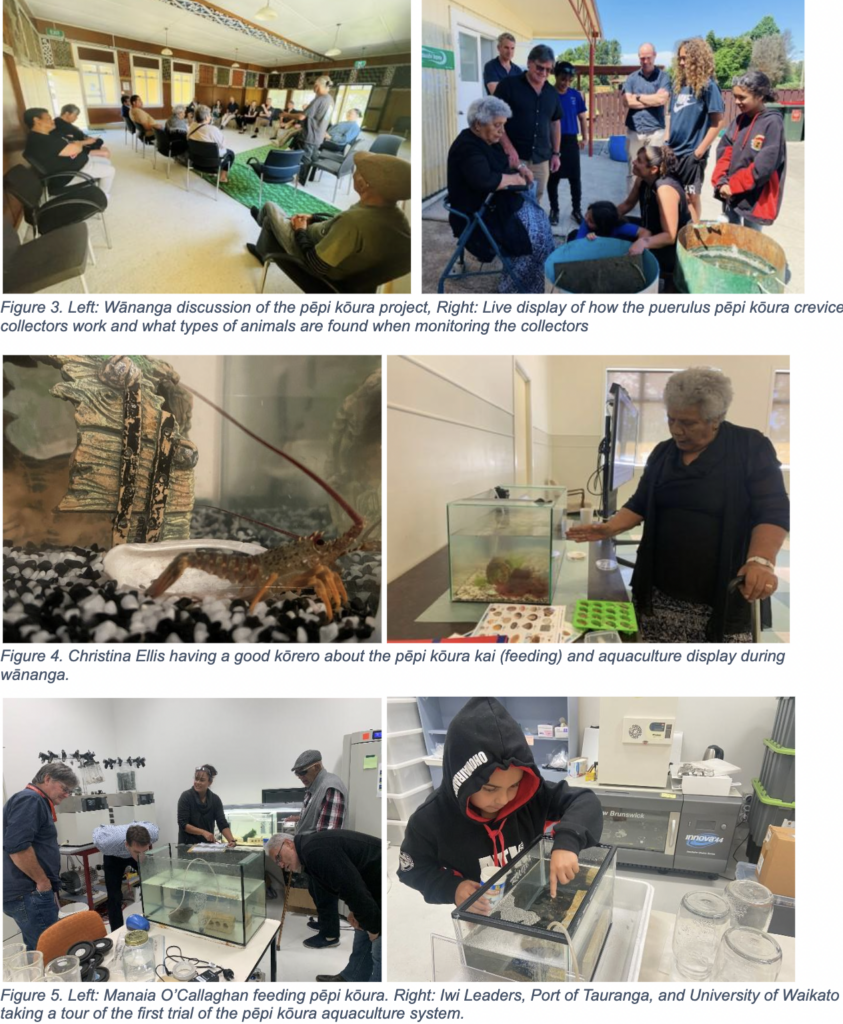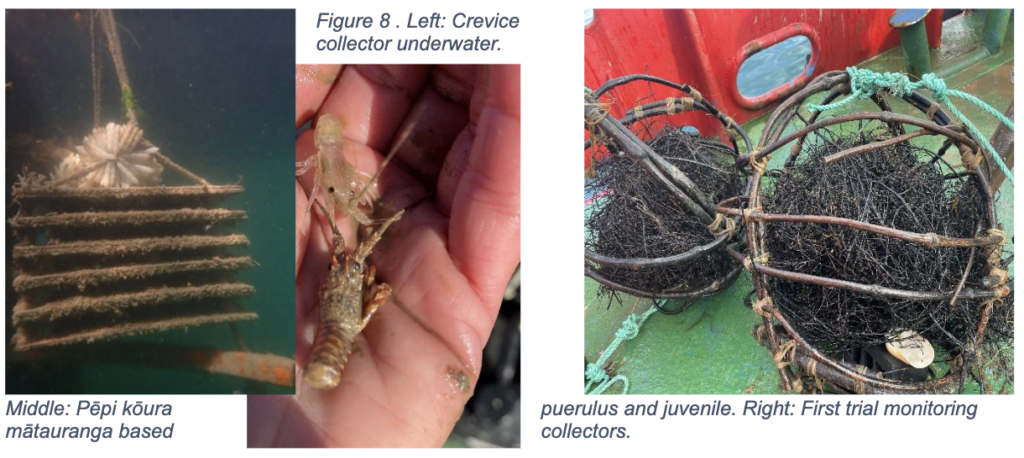- AUTHORCreating pēpi kōura nurseries to protect against a changing climate
- Thursday, June 27, 2024
Creating pēpi kōura nurseries to protect against a changing climate
“Ko au ko te moana. Ko te moana ko au”
“I am the ocean. The ocean is me”
Acknowledgements
Ngā mihi maioha ki taku whānau o Tauranga Moana mō te tautoko o tēnei rangahau. Ki ngā tangata o Ngāi Te Rangi, ko Ngāti Ranginui, ko Ngāti Pūkenga, tēnā koutou. Ka nui te mihi ki Te Kōmata o Te Tonga rātou ko Te Whare Wānanga o Waikato, Te Poti o Tauranga, he mea tautāwhi ā ngā iwi o Tauranga Moana hei tiaki te kaupapa. Ngā mihi mahana hoki au ki ngā tohu o te moana nei.
I acknowledge and deeply thank my wider family of Tauranga Moana for the ongoing support for this research, the people of Ngāī Te Rangi, Ngāti Ranginui and Ngāti Pukenga. I greatly thank the Deep South Challenge team, my supervisors at University of Waikato and the Port of Tauranga who have supported me and the people of Tauranga Moana to implement this project. I also pay my warmest respects to the guidance of the moana.
Introduction
This research fundamentally stems from the aspirations of Tauranga Moana iwi, who have observed the localised decline of taonga marine species over many generations. A key priority for the research was to provide an access pathway to share and enable mana whenua to collect pēpi kōura during the most vulnerable stage of life, on-grow them using aquaculture, study their behaviours and nutritional requirements and to prepare to rehabilitate them for release back to the wild.
The anecdotal evidence of mana whenua and the scientific monitoring, tells us the kōura population in Tauranga Moana has declined. These concerns are supported by baseline monitoring carried out in 2013 and the consequent surveys carried out in 2022/23 that used mātauranga Māori and marine science to identify kōura distribution, abundance and sizing in the Tauranga Moana Mātaitai Reserve.

This research is guided by the ‘Te Toka Tū Moana Framework’ developed to begin the project with a guiding set of tikanga – ethics (Figure 2). The framework critically positions mātauranga ā iwi and marine science methods as key drivers to establishing a unique methodology for marine research. It provides the backbone for this research that supports a transdisciplinary approach led by mātauranga Māori. It draws on concepts of reciprocity and responsibility. It offers transformational insight into meaningful collective research and management of a taonga species.
Figure 2. Te Toka Tū Moana research framework that draws on values and principles that support collaboration, active research, understanding different worldviews and empowering active kaitiakitanga.
Development of the research was led and done in partnership with iwi of Ngāi Te Rangi, Ngāti Ranginui and Ngāti Pūkenga through the Tauranga Moana Iwi Customary Fisheries forum. We met with iwi and partners to discuss and agree on specific co-development and co-implementation planning, roles and responsibilities.
This research was led by Tauranga Moana Iwi as an effective collaboration with other organisations, the University of Waikato and the Port of Tauranga; intergenerational sharing and learning between kuia, koroua, pakeke, rangatahi and tamariki; and collaborative Iwi engagements across the Bay of Plenty via the Mai i ngā Kurī ā Whārei Fisheries Forum. We are now sharing our methods with other iwi such as Ngāti Wai in the far north to enable other iwi to learn from what we have found successful.
Iwi Engagement and Wānanga
A key highlight of this project was engaging with our people using an intergenerational learning approach to wānanga. For our first wānanga, participants included tamariki, rangatahi, pakeke, kuia, koroua, research partners, and DSC staff. We used different methods of sharing the research including discussions in the wharenui, a live display of pēpi kōura collectors and a live display of a pēpi kōura inside an aerated tank.

We have also shared our learnings through education sessions with tamariki at Te Kura o Matapihi where they looked after a pēpi kōura in class for one term. They learnt about pēpi kōura biology, care, feeding, water quality testing and the effects of climate change.
Through the DSC Impact Grant, the project provided for two young wahine rangatahi Te Paea Ririnui-Hennings and Pikitia Ririnui-Hennings majoring in aquaculture to be a part of the research to further develop capacity in aquaculture for our next generation of Māori marine experts. They are now applying their learnings from kōura aquaculture for their own future research projects. More recently, the university employed Reitemanava Walker as an intern in the project who also decided to enrol in a marine science degree which is another fantastic outcome of this project. Te Paea and Pikitia also became part of the Toi Rito, Toi Rangatira rangatahi leadership proramme within the DSC.
These young wahine have been an integral part of my team doing fieldwork, lab work, and aquaculture husbandry. They are all either enrolled or have completed marine science degrees.

Mātauranga Based Collectors
I co-developed a monitoring plan with research partners to test mātauranga based collection methods. I presented a project update; the construction of mātauranga based collectors which was inspired by the tāruke traditional Māori craypot re-designed as a kohanga to collect pēpi kōura; Together we reduced the number of monitoring sites to a selection of the highest producing collection sites within Tauranga Harbour. Similar to the traditional craypot catch method, pēpi kōura have the ability to escape the collector. These are designed and constructed as a kohanga – nursery that provides a shelter that they can also escape from.
Workshops were held at the University of Waikato to fine tune the mātauranga based collection ideas which began the creation of the new collectors with two kuia who shared their rāranga and innovative expertise.
As part of my project reporting I regularly met with Iwi partners in this research to report my research results and findings. I have met with Iwi on Sunday 9th June and continue to meet with them regularly as I continue fieldwork for the mātauranga based collectors through the peak recruitment period of June – August (see the following description and Figure 7).
Figure 7. Pēpi kōura recruitment season of monitoring crevice collectors between June 2022 – June 2024

The mātauranga based collectors are currently being trialled to test comparative efficiency alongside the contemporary crevice collectors. At this stage, both methods of collectors have nil results for the comparative study. However, the mātauranga collectors are withstanding tidal conditions and we expect to see some results over the next two weeks. We are currently approaching the best season for collecting pēpi kōura from the wild and I have confidence in receiving further results shortly. We are monitoring the collectors weekly to have a robust data set during the peak recruitment period for pēpi kōura. Based on the past two years of monitoring the crevice collectors, results show that the months of June, July, and August is the peak period for collector use (Figure 7).
Aquaculture Research and Development
A key highlight of the project was the research and development to create two of our own recirculating aquaculture systems. The first recirculating aquaculture system that we designed and built from scratch included 3 large 60 litre holding tanks to house pēpi kōura as they grew larger. The second recirculating aquaculture system was for 15 smaller pēpi kōura that were kept inside separated 12 litre small tanks. The second system is also going to be used for my final year of PhD study to run nutritional experiments to determine the best diet for pēpi kōura to grow and release to the wild. This will be a feeding trial testing different diets of kina –Evechinus chloroticus, Kutai – Perna canaliculus and manufactured food pellets (primarily made from shrimp).
Dissemination of Findings
Throughout the duration of this DSC project, I have done several presentations to my iwi partners, external organisations, school groups, regional council. This report forms the basis of a summary booklet that can be shared externally. As I fulfil my PhD study which has one more year to completion, I will also have the resulting thesis which can be later included as a part of the dissemination of findings. I have also had discussions with my University of Waikato supervisors about continuing this research into a post doctorate study to conduct further research into releasing pēpi kōura back to the wild. Once I have completed my PhD, there will be more opportunities for publishing journal articles.
We also established an Instagram platform developed by rangatahi as a means of utilising social media to record and share learnings in relation to the entire study. As my studies continue I will further develop this summary of findings for presenting findings internally and externally.
Noho ora mai,
Kia Māia Ellis
Project Lead